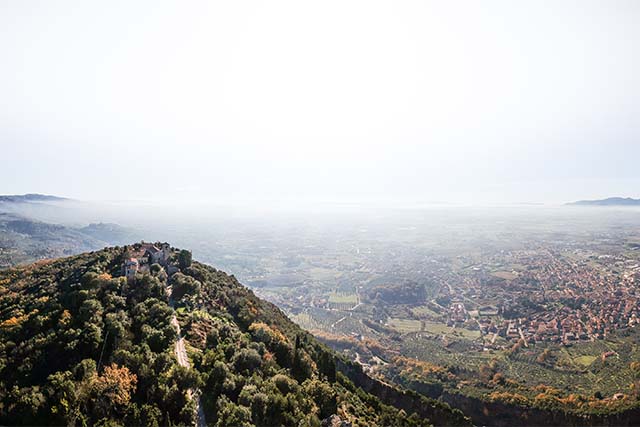Municipality of Monsummano
Around the year 1000, the locality of Montesumano was probably administered under the royal fiscal system. Beginning only from the 12th century, a castle is documented as standing on the hill of Monsummano, controlled by the Counts Alberti of Prato. The material traces of the Alberti castle are still perfectly recognizable, at the top of the cone-shaped elevation that overlooks the Fucecchio marshes. Despite the progressive abandonment of the site, at the end of the 15th century, Leonardo drew the castle of Monsummano still vaunting its defensive structures, clearly recognizable, both in the famous 1473 landscape and in one of Leonardo's maps depicting the Lower Valdarno.
Montecarlo, a small but well-fortified town of the Valdinievole, was represented by Leonardo in the forms we can see today. In fact, it preserves perfectly the layout of the 14th-century castle, the Castrum Lucense, founded anew by the city of Lucca after the destruction by the Florentines. Subsequently it was called "Mons Caroli," Montecarlo, with clear reference to the young prince, son of the count of Luxembourg and lord of Lucca. The orthogonal layout of the new fortified village built at the foot of the Rocca del Cerruglio was typical for newly founded villages.






